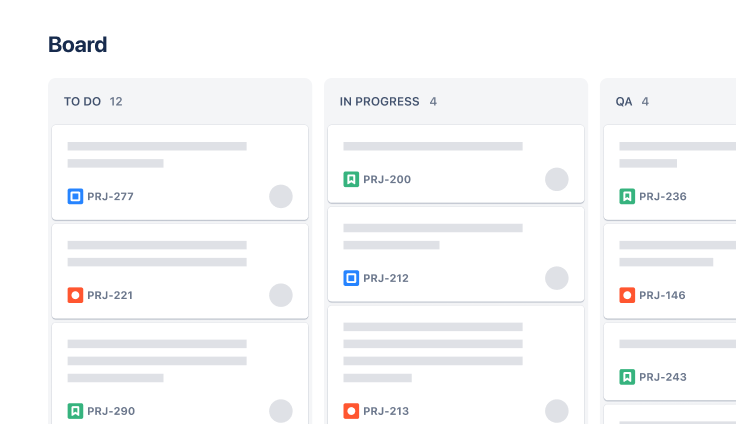Issue tracker template
Jira's issue tracker template is an essential tool that helps project managers break down large tasks into manageable ones for more efficient workflows.
BEST FOR
Project management
Operations
KEY FEATURES
Task planning
Prioritization
Pipeline management
What is an issue tracker template?
Log spreadsheet
The issue tracking template includes a log spreadsheet to record and organize various issues. It’s a straightforward way to keep track of problems, their status, and resolutions to ensure you don't overlook anything.
A well-maintained log spreadsheet offers a real-time view of the health of your tasks. It's not just a list but a dynamic tool that can provide alerts, reminders, and reports. Teams can customize their log spreadsheets with filters and tags to make navigating issues more manageable. This ensures teams are always aware of the status of their project's most critical elements.
Customizable document
An issue tracking template isn't a static document; it's customizable to fit the unique requirements of your project. You can tailor it to suit your team's workflow, project specifics, and the nature of the issues you're tracking.
It can grow and change as your project does, from a simple task list on day one to a comprehensive outline of tasks, dependencies, and reports as your project matures. This adaptability is particularly useful if you're utilizing methodologies such as a Kanban board to visualize project management workflows.
What does the issue tracker template include?

Issue details
Every issue you enter into the issue tracking template includes a detailed description. This ensures all team members understand the problem's context and can contribute effectively to its resolution. This is similar to creating an issue log, where details are paramount for resolution.

Pre-configured reports
The issue tracking template features pre-configured reports that help teams identify trends and predict future performance. These insights are critical for staying ahead of potential problems and ensuring your team's continued success.

Insights
Key project information is always at your fingertips with this template. Understand the project scope, timeline, and responsibilities at a glance. This level of detail and organization is essential when creating an issue tracker that effectively supports your team's efforts.
The right issue tracker provides visibility into the health of your project, resource allocation, and potential bottlenecks. It's not just about knowing what needs to be done but having the foresight to plan for the unexpected and keep your project on track.

Timeline view
A timeline view is instrumental in helping teams visualize the chronology of issues. It also helps them understand the impact on project progress and plan accordingly. This view is a visual aid and strategic tool that assists in managing and prioritizing tasks effectively. It also provides a clear, chronological perspective, essential for tracking dependencies and anticipating potential bottlenecks in your project.
How to get started with the issue tracker template
- 1
Identify issue type
Begin by categorizing issues based on their nature. This step helps you prioritize and tackle critical problems first. Understanding and organizing product backlogs is a crucial step in this process to align issues with your overall project goals and deliverables, It also facilitates better communication within the team about what needs to be done and why.
- 2
Gather issue details
Collect all relevant information about each issue, including its origin, current status, and potential solutions. The more detailed your entries, the easier it will be to resolve the issue. This process is similar to creating an issue log, where thoroughness leads to efficiency. Detailed documentation of issues aids in creating a knowledge base for future reference and helps avoid repeated issues.
- 3
Establish workflows
Define clear and efficient workflows for each type of issue. A well-structured project workflow ensures quick resolution and minimizes the impact on your project. This step is especially important in a tool like Jira with highly customizable workflows. Effective workflow management also contributes to transparent communication and sets clear expectations for team members.
- 4
Assign responsibility
Assign ownership of each issue to specific team members. Clear responsibility provides accountability and ensures a team member is actively working on resolving every issue. Ensuring that every issue has someone working on a solution streamlines the process and fosters a sense of ownership and responsibility among team members.
- 5
Set priority
Prioritize issues based on their urgency and impact. This step ensures your team focuses on the most critical problems first. Prioritization also ensures you allocate resources to the most pressing issues, investing the right amount of effort and time.
- 6
Regularly review and update
Issue status can change rapidly. Regularly review and update the issue tracker to reflect the current status of each issue and the project as a whole. This ongoing process is vital for maintaining an accurate overview of the project's progress and adapting to any changes or new challenges. Consistent updates provide a real-time view of the project's health and help make informed decisions.
Related templates


